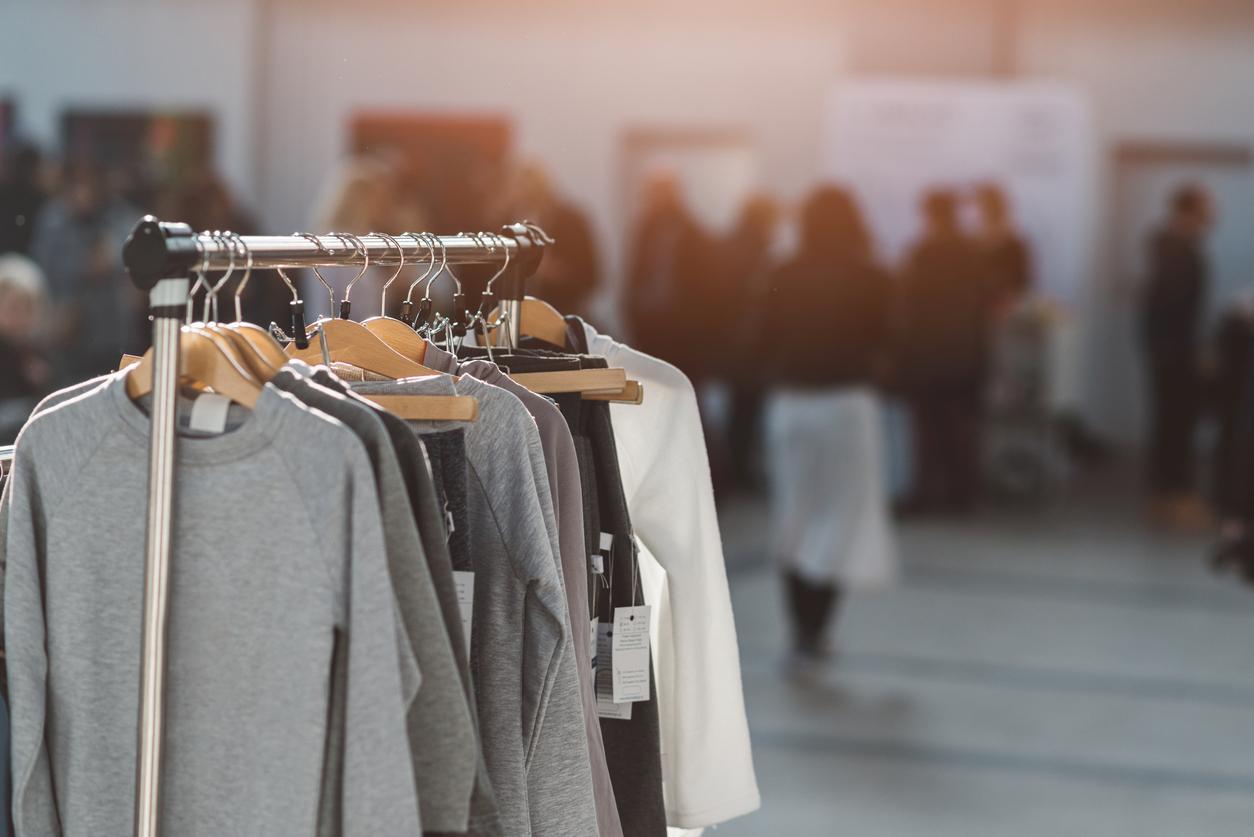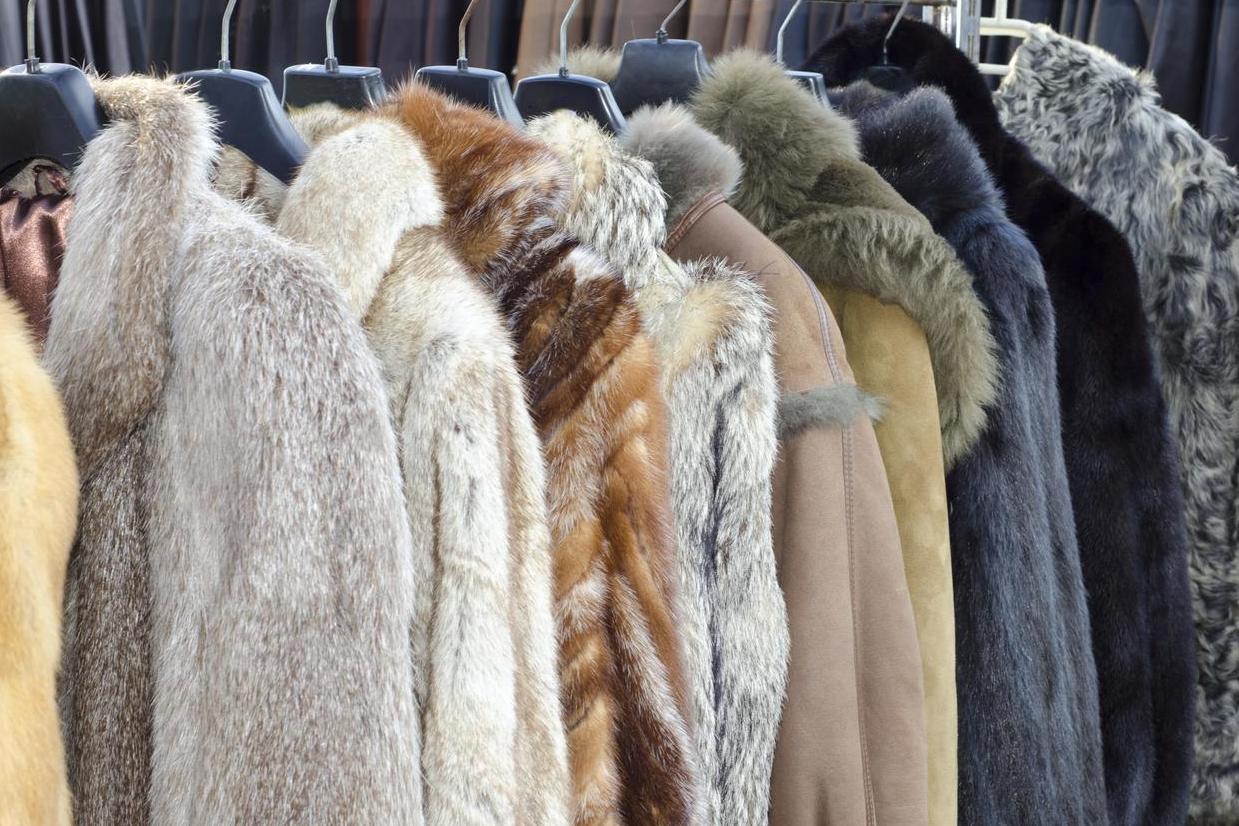The fabrics with the worst environmental impact revealed, from polyester to fur
As fast fashion continues to put the future of our planet at risk, Sarah Young speaks to industry experts to find out how different fabrics impact the environment and what we, as consumers, can do to help


You might think that the pandemic has forced us to rethink our shopping habits and become more environmentally conscious, buying less from fast fashion brands and moving to a slower pace of consumption. Think again.
Fast fashion juggernaut Boohoo’s profits have soared during the last year. Meanwhile, despite the collapse of Philip Green’s Arcadia Group, Asos has now acquired half of the shopping empire (including Topshop, Topman and Miss Selfridge).
The other half, comprising Dorothy Perkins, Wallis and Burton, was bought by none other than Boohoo, which also recently purchased Debenhams.
An industry that thrives on providing consumers with the latest trends, fashion’s rapid turnover means that each year we consume approximately 80bn pieces of clothing – a volume which is putting strain on the planet.
According to The Waste and Resources Action Programme (WRAP) – a charity that works with governments, businesses and communities to improve resource efficiency – approximately £140m worth of clothing goes into landfill each year.
Alice Wilby, a sustainable fashion consultant and spokesperson for Extinction Rebellion tells The Independent that this kind of reliance on landfill results in “wasting perfectly usable textiles, slowly leaking toxins into the earth and microfibres into the waterways" and contributes to methane emissions.
And that's not all. By 2050 it is anticipated the fashion industry will use up 25 per cent of the world’s carbon budget, making it one of the most polluting industries second only to oil. So, what can we, as consumers, do to change this?
When it comes to environmental action, one of the most effective ways people can individually have a positive impact on the planet is to choose fabrics that are sustainable.
However, given that all conventional fibres have different environmental and social impacts associated with them, knowing which materials to buy can be complicated.
Wilby explains that there are many factors that influence the sustainable credentials of a fabric, including how much water or energy it takes to produce, where in the world it is manufactured and how it’s production affects biodiversity.
To make a more informed decision, Fashion For Good – a global platform for sustainable fashion innovation – recommends judging the impact of materials on the basis of its “Five Goods Cradle-to-Cradle” concept which looks at how sustainability is integrated across the whole supply chain of a good or product. This includes:
- Good Materials – safe, healthy and designed for reuse and recycling. Materials are returned to the biosphere in the form of compost or other nutrients, from which new materials can be created
- Good Economy – growing, circular, shared and benefiting everyone
- Good Energy – renewable and clean. Reduction in MW/h of energy consumption. Increase in MW/h of energy from renewable source. Associated reductions in CO2 emissions
- Good Water – clean and available to all. Reduction in cubic metres of H2O consumption
- Good Lives – living and working conditions that are just, safe and dignified. Fair jobs created, workers paid living wage and empowerment trainings conducted
It’s also worth exploring specific brands that are just as passionate about the issue as you are, such a luxury label Mother of Pearl which uses organic and natural materials, and puts social responsibility, respect to animals and low-environmental impact first.
Amy Powney, creative director of the fashion brand, tells The Independent that she ensures Mother of Pearl embraces sustainability from a holistic point of view, from restructuring its supply chain in accordance to ethical practices to creating a plastic-free and low-waste working environment in its London headquarters.
Powney says that working with Mother of Pearl made her realise that “you can’t use the word sustainability” without seeing it in practice through a brand’s "culture”.
“Every angle of how we run the business is looked at and we are constantly trying to improve practices, the biggest things come first and the small ones are on the list," Powney tells The Independent.
To help you minimise your impact on the environment, we’ve put together a list of the best and worst fabrics for the environment with the help of a number of industry experts.
The worst fabrics for the environment: Cotton, synthetics and animal-derived materials
Cotton

While cotton is a natural fibre that can biodegrade at the end of its life, it is also one of the most environmentally demanding crops.
Wilby explains that cotton is “very water intensive to cultivate and process”, taking between 10,000 and 20,000 gallons of water to make a single pair of jeans and up to 3,000 to make a T-shirt.
The fashion consultant adds that cotton farming also uses high levels of pesticides and toxic chemicals that seep into the earth and water supplies.
“Cotton as a crop wreaks havoc with both people and planet even before it’s turned into clothing,” Wilby says.
According to Fashion For Good, conventional cotton production accounts for one sixth of all pesticides used globally, impacting farmers and local communities with harmful chemicals – a claim that is bolstered by figures from the World Health Organisation, which show that in developing countries approximately 20,000 individuals die of cancer and suffer miscarriages as a result of chemicals sprayed on conventional cotton.
Peter Maddox, director of WRAP agrees, explaining that it is imperative that producing cotton is done as sustainably as possible to limit its environmental footprint by using fewer pesticides, less water and taking working conditions into consideration.
“Manufacturers, brands and retailers must use sustainable cotton, which many more are now doing,” Maddox tells The Independent.
Synthetics (Polyester, Nylon and Acrylic)

Laura Balmond, project manager of Make Fashion Circular at environmental charity the Ellen MacArthur Foundation (EMF), states that synthetic fabrics are usually produced from oil and account for 63 per cent of the material input for textiles production.
The most common materials in this sector are polyester (55 per cent), followed by nylon (five per cent), and acrylic (two per cent).
While plastic-based fibres do not require agricultural land and use little water in production and processing, they do negatively impact the environment in other ways.
Not only are synthetics not biodegradable, they all rely on the petrochemical industries for their raw material, meaning this fashion industry staple is dependent on fossil fuel extraction.
Aside from the environmental impact incurred during extraction, manufacturing and shipping of synthetic clothing and material, “the use of fossil fuels brings with it other detrimental issues including oil spills, methane emissions and wildlife disruption and biodiversity loss”, Wilby says.
Powney agrees, adding that she avoids using materials like polyester in Mother of Pearl’s garments.
“It doesn’t stop at the manufacturing stage either, every time you wash a polyester garment it releases microfibres into our waterways causing immense damage to marine life and vital ecosystem,” she says.
Animal-derived materials (Wool, leather and fur)

According to Balmond, protein-based fibres like wool account for less than two per cent of all fibres used and, if produced without using or retaining any substances of concern, they can be safely biodegraded.
However, materials like leather are responsible for huge methane outputs which Wilby says is rarely noted in conversations about sustainable fabric manufacturing.
Methane is at least 20 times as strong a greenhouse gas as CO2 and the United Nations’ Food and Agriculture Organisation (FAO) estimates that livestock are responsible for about 14.5 per cent of the world's greenhouse gas emissions.
As well as the carbon footprint associated with raising cattle and transporting the material, the impact on livestock and workers inthe impact on livestock and workers in* the leather industry is huge the leather industry is huge.
Extinction Rebellion states that one billion animals are killed for leather every year while 85 per cent of the worlds leather is tanned with chromium, an extremely toxic substance that often leaves tannery workers with cancer and skin conditions.
Balmond adds that toxic chemicals are often used to preserve wool and fur which, if poorly managed or simply discharged, can pollute the waterways, causing devastating pollution and further affecting the health of communities living along the banks.
The best fabrics for the environment: Recycled, man-made cellulose and bast fibres
Recycled fabrics
To be truly environmentally friendly, Extinction Rebellion believes that the fashion industry needs to stop using virgin resources to create new materials and instead "use and repurpose what we already have”.
Fortunately there is already a growing movement utilising recycled wool, cotton and synthetic fabrics for design.
For example, recycled polyester – a more sustainable alternative to virgin polyester – uses up to half as much energy to make and saves plastic from landfill.
However, it is worth noting recycled polyester still sheds microfibres so Wilby suggests using a product like a Guppy Bag, which reduces fibre shedding and filters the few fibres that do break through.
Man-made cellulose fibres
Cellulose-based fibres refers to those obtained from plant-based materials, Balmond states.
This material can be either directly extracted from plants, such as cotton, or treated chemically to extract and process cellulose. If produced without using or retaining any substances of concern, cellulose-based fibres can be safely biodegraded.
Fashion brand Mother of Pearl regularly uses Tencel – a fibre that originates from the renewable raw material wood and is created by photosynthesis.
Powney says the fabric is made through a “close loop production process” meaning the water used is recycled, fewer chemicals are required during manufacture and the trees used are managed under strict regulations.
Extinction Rebellion also lauds biodegradable alternatives such as Pinatex which is a by-product of the pineapple industry.
Bast fibres
Bast fibres are those which are sourced from plants with a stem consisting of a woody core and fibrous bark, such as hemp, flax, nettle, jute and rame.
Fashion For Good says these materials are of great interest because of their small footprint compared to other natural fibres, their low water consumption and hardiness against pests and diseases.
Extinction Rebellion claims that hemp is one of the best alternatives to cotton because it “uses a lot less water, can be grown in lots of different environments all over the world, thrives without the need for pesticides and contributes about half the carbon footprint”.
Aside from investing in the right fabrics there are many ways we can all improve the sustainability rating of our own wardrobes. Here are five top tips from our experts:
Wear more, waste less: Next time you want to buy something, ask yourself: how many times would I wear this? According to Fashion For Good, by wearing your clothes for an extra nine months, you can reduce waste and water usage by 20-30 per cent.
Quick and cool washes: Washing your clothes with cold water on a quick cycle uses half the energy of washing warm. By doing one cold load per week for a year, you can save the carbon equivalent of driving 123km.
Care for your clothes: It may sound obvious, but caring for your clothes throughout their time with you will keep them lasting longer, and reduce the environmental impact they have.
Recycle: You should never throw any item of unwanted clothing into the bin. “No matter how old, how threadbare or how unloved all textiles can either be reused or recycled and have a potential second life after you’ve finished with it,” Maddox says.
If you can’t find another use for your clothes, always put them, and any other textiles, into a recycling collection bag or collection bank.
Stop shopping: Extinction Rebellion says that encouraging more consumption will only make fashion’s environmental footprint worse, so the first thing you need to do to improve sustainability is to stop shopping and embrace the clothes you already own.
“Go back to your wardrobe, investigate what you already have and fall back in love with your clothes,” Wilby says.
“Take time to rediscover your own personal style, away from the influence of the fashion industry’s media and marketing machine.”
Join our commenting forum
Join thought-provoking conversations, follow other Independent readers and see their replies
Comments
Bookmark popover
Removed from bookmarks